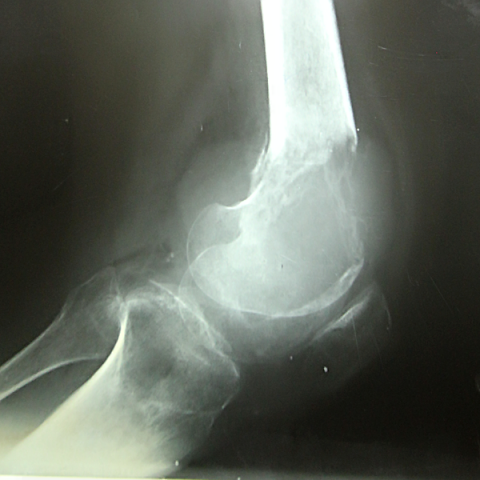Case Identification
Case ID Number
Tumor Type
Body region
Position within the bone
Benign or Malignant
Clinical case information
Case presentation
FJ is a 32-year-old father of two small children who presented to the local hospital in Nicaragua with a painful tumor in the left distal femur. A biopsy was made and the diagnosis was giant cell tumor. The patient was told that he needed an amputation, but he refused.
Radiological findings:
The patient did not wish to have an amputation and he returned home. Several months later he presented again, this time with severe pain. He was no longer able to walk or move due to the pain. The tumor had enlarged and there was an unstable pathological fracture of the distal femur. The x-rays show a destructive, lytic lesion, with no bone formation or matrix which had completely destroyed the distal femur. A displaced and unstable pathological fracture was also noted. It was uncertain if the osteopenia in the proximal tibia was due to disuse or due to extension the tumor.
Laboratory results:
No laboratory examinations ordered.
Differential Diagnosis
The diagnosis had been confirmed by pathological examination to be giant cell tumor.
Pathology results:
Confirmed as giant cell tumor.
Treatment Options:
In developed countries, this patient would be treated with a distal femoral replacement, either using a mega prosthesis or a distal femoral allograft. However, these resources were not available, and the only remaining option was some type of amputation. Fortunately, the patient had healthy, normal bone and soft tissue below the knee that could be saved. As a result, the patient was a good candidate for rotationplasty. A rotationplasty is a modified amputation where the distal portion of the leg is saved rather than being cut off. This procedure has the potential to give the patient a far better functional result than an above-knee amputation.
Special Features of this Case:
Due to the limited local resources, some sort of amputation was the only option. A rotationplasty is a modified amputation where the distal portion of the leg is saved rather than being cut off. The leg and ankle are turned 180 degrees, so that the strong and healthy ankle joint can function as a knee joint. This allows the patient to use shorter prosthesis and walk crutch-free. However, to achieve this goal, the patient still faces a long period of rehabilitation and a complex prosthetic fitting. Because of his extremely limited resources and the limited resources of his country, a donated prosthesis will be required. Special fitting and re-configuration of the socket portion of the prosthesis will be required so that the patient can get back on his own two feet.
Image

Secret Tumor Name
Case ID Number
Image Types
Image modality
Tumor Name
Example Image
no
Tumor Type
Benign or Malignant
Body region
Bone name
Location in the bone
Tumor behavior
Tumor density









